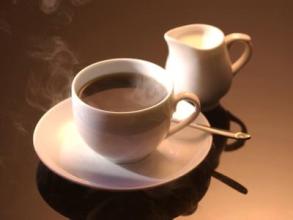Cappuccino coffee cappuccino foam coffee cappuccino coffee cappuccino coffee machine
On the basis of Italian espresso, add a thick layer of foaming milk.
Cappuccino coffee
Cappuccino coffee
Cappuccino. The quality of espresso can be seen in milk and foam, but it is still an important factor in determining the taste of cappuccino. Pour the partially skimmed milk into a pot, then use a foamer to foam and inflate the milk, and let the milk be as uniform as whipped cream without burning. The coffee cup containing cappuccino should be warm, otherwise the milk foam poured will spread. Usually, you can put these cups on the top of the coffee maker to keep warm, pour milk and foam on top of the espresso, and naturally form a layer of white liquid, which looks like wrapping up the coffee below. Note that the brewed Italian coffee is about five cents full, and the hot milk that has been foamed is about eight cents full. Finally, sprinkle with a little finely diced cinnamon or chocolate powder as you like, and pour the rest of the milk together. In this way, a delicious cappuccino is made.
History editor
Cappuccino coffee tastes good, but its origin is more knowledgeable, and it has always been the best material for studying text changes in Europe and the United States.
The history of the word Cappuccino is enough to show that a word is often extended to other meanings because it looks like something.
Cappuccino coffee
Cappuccino coffee
Far beyond the original intention of the word maker. It sounds complicated. Take a look at the following analysis.
The monks of the St. Franciscan Church (Capuchin), founded after 1525, all wore brown robes and pointed hats. When the St. Franciscan Church spread to Italy, the locals thought that the monks' clothes were very special, so they gave them the name Cappuccino. The Italian word refers to the loose robes and small pointed hats worn by monks, derived from the Italian word "headscarf" or Cappuccio.
However, Lao Yi loved coffee and found that when espresso, milk and milk foam were mixed, the color was like the dark brown robe worn by monks, so he came up with a drink with coffee and sharp milk bubbles, which was named Cappuccino. The word was first used in English in 1948, when a report in San Francisco first introduced cappuccino beverages, and it was not until 1990 that it became a familiar coffee drink. It should be possible to say that the word Cappuccino coffee comes from the St. Franciscan Church (Capuchin) and the Italian headscarf (Cappucio). It is believed that the original word makers of Cappuccino never dreamed that the monks' robes would eventually become the name of a coffee drink.
Viennese Fanz George Kolschitsky, the founder of Cafe Latte with Milk and Coffee, will talk about the origin of Cappuccino in this issue. Both drinks are made from coffee and milk, but cappuccino has a more knowledgeable origin and has always been the best material for the study of character changes in Europe and the United States.
Cappuccino coffee is a variation of Italian coffee, that is, strong coffee is poured with steamed milk, and the color of the coffee is like the headscarf on the dark brown coat of cappuccino monks, hence the name caffeine.
Other editors
Did you know that cappuccinos can be dry or wet? The so-called dry cappuccino (Dry Cappuccino) refers to the conditioning method with more milk bubbles and less milk. it tastes stronger than milk and is suitable for people with heavy taste. As for wet cappuccino (Wet Cappuccino), it refers to the practice of fewer milk bubbles and more milk. The smell of milk overshadows the thick smell of coffee, which is suitable for those with light taste. The flavor of the wet cappuccino is similar to that of the popular latte. Generally speaking, the taste of cappuccino is heavier than that of latte. If you have a heavy taste, you might as well order cappuccino or dry cappuccino. If you are not used to the heavy smell of coffee, you can order latte or wet cappuccino.

Important Notice :
前街咖啡 FrontStreet Coffee has moved to new addredd:
FrontStreet Coffee Address: 315,Donghua East Road,GuangZhou
Tel:020 38364473
- Prev

The difference between Arabica and Robusta the harm of robusta beans
Robusta generally grows in the Eastern Hemisphere, mainly in Africa, Indonesia and Vietnam. Arabica is also grown in Africa and Papua New Guinea, but today it is mainly grown in Latin America. Among the major coffee producing countries in the world, Colombia only grows Arabica coffee. Most of the coffee grown in Vietnam is Luo.
- Next

Introduction to the knowledge and stage of Coffee roasting
A series of chemical changes occur during the baking process. After about 5-25 minutes of baking (depending on the temperature selected), the green coffee beans lose some humidity and turn yellow. In this process, the coffee beans will swell, changing from a strong, high-density raw bean to a low-density fluffy state. After this process, the size of the coffee beans will about double, starting
Related
- Beginners will see the "Coffee pull flower" guide!
- What is the difference between ice blog purified milk and ordinary milk coffee?
- Why is the Philippines the largest producer of crops in Liberia?
- For coffee extraction, should the fine powder be retained?
- How does extracted espresso fill pressed powder? How much strength does it take to press the powder?
- How to make jasmine cold extract coffee? Is the jasmine + latte good?
- Will this little toy really make the coffee taste better? How does Lily Drip affect coffee extraction?
- Will the action of slapping the filter cup also affect coffee extraction?
- What's the difference between powder-to-water ratio and powder-to-liquid ratio?
- What is the Ethiopian local species? What does it have to do with Heirloom native species?

